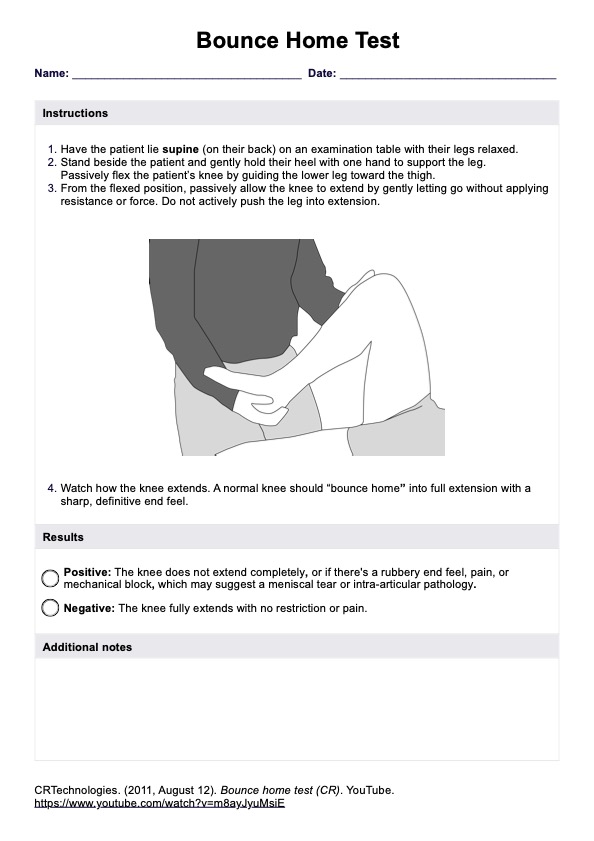The Bounce Home Test purpose is to identify possible internal knee injuries, particularly meniscus tears, by assessing the knee’s ability to extend completely without restriction. It helps detect mechanical blocks or abnormal end-feel caused by intra-articular pathology.

Bounce Home Tests
Access a free PDF guide to the Bounce Home Test, a diagnostic tool for evaluating the meniscus and identifying potential injuries.
Bounce Home Tests Template
Commonly asked questions
Having the patient supine (lying on their back) ensures the leg muscles are relaxed, allowing for a more accurate evaluation of passive knee extension. This position helps isolate joint mechanics and improves the test’s reliability.
If the knee fails to extend completely or if the motion ends with a rubbery or painful stop, it may indicate the presence of a torn meniscus, loose body, or another internal issue. This would be considered a positive Bounce Home Test result and may warrant further investigation.
EHR and practice management software
Get started for free
*No credit card required
Free
$0/usd
Unlimited clients
Telehealth
1GB of storage
Client portal text
Automated billing and online payments











